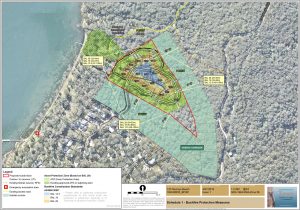The threat posed by radiant heat and flame contact is very effectively reduced by establishing an Asset Protection Zone (APZ), i.e. increasing the separation distance between buildings and bushfire prone vegetation. The separation distance required ranges from 10m-100m depending on slope, vegetation type, and the nature of the asset. Where appropriate separation distances can be accommodated within private property boundaries it is the responsibility of private property owners to manage these areas. Councils, NSW National Parks & Wildlife Service and other public land managers maintain APZs on public land in some locations.
